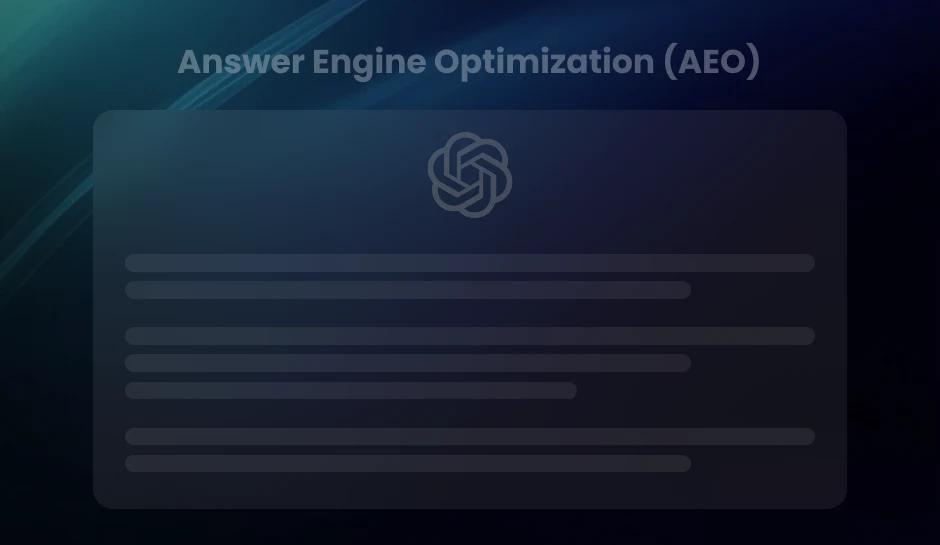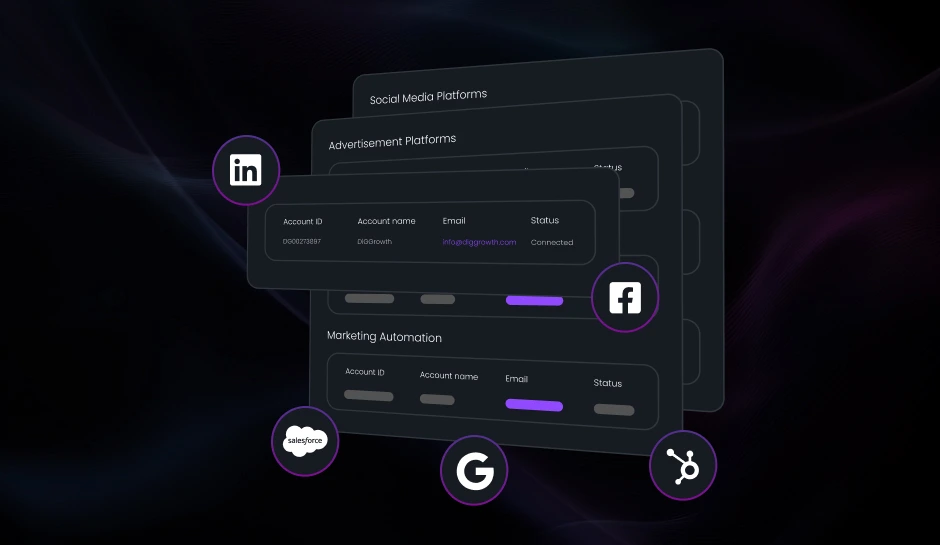
Mastering the Attribution Calculation Formula: Unlocking ROI from Clicks to Capital
Learn how different marketing attribution models distribute credit across touchpoints. From simple first- and last-click methods to data-driven algorithms, this guide breaks down how each model works and helps you identify which best reflects your customer journey and campaign effectiveness.
Attribution serves as the analytical backbone for decision-making, whether you’re scaling a digital marketing campaign or fine-tuning an investment portfolio. In marketing, attribution refers to the process of assigning value to each interaction a customer has on the path to conversion. Every click, view, or engagement plays a role, and attribution calculates how much each contributed to the final sale or lead. In finance, attribution breaks down portfolio performance to assess how asset allocation, sector selection, or security choices impact returns relative to a benchmark.
The value of attribution in both arenas lies in clarity. It doesn’t just track what worked, it quantifies how much each element worked. Marketers use attribution to calculate ROI by channel, campaign, or individual keyword. Portfolio managers use performance attribution to isolate the sources of alpha. Think of it this way: understanding attribution is like having a dashboard that tells you exactly which gears drive the machine forward. Ignore it, and you’re steering blind. Master it, and every move becomes measurably smarter.
Sharpening Accuracy: Foundations of Attribution Calculation
What Is the Attribution Calculation Formula?
Marketing attribution doesn’t rely on gut instinct- it starts with a mathematical formula. The formula assigns measurable value to each touchpoint in a customer’s journey, isolating which interactions contribute most to conversion outcomes. Instead of generalizing results, attribution zeroes in on each channel or tactic’s quantitative input.
The foundational formula looks like this:
Attribution = (Weight of Touchpoint/Channel) × (Performance/Conversion Contribution)
This equation assigns each element a percentage of impact based on its relative importance and proximity or role in the conversion path. Rather than treating all interactions equally, attribution asks: How much did each step move the needle?
Understanding Value and Weight in Performance Distribution
The formula relies on two central pillars: value and weight. These aren’t abstract terms- they quantify performance influence at different layers. A channel’s weight represents its influence on the customer journey based on timing, engagement intensity, or predefined business rules. The performance contribution measures actual output, such as conversions, clicks, or assisted conversions tied to that channel.
- Value looks at what tangible outcome each touchpoint delivers.
- Weight reflects how much influence a channel is modeled to have in the overall journey.
Weighting can be linear, time-decayed, position-based, or data-driven. High-performing catalysts earlier in the funnel may warrant a different weight than final-conversion triggers.
Portfolio Thinking: Attribution as Strategic Resource Allocation
Interpreting attribution through the lens of portfolio management reveals its strategic DNA. Just like assets in an investment portfolio carry different risk-reward profiles and contribute uniquely to total return, the same holds for marketing touchpoints. Each channel or asset has a calculated influence on campaign ROI.
Investors allocate capital based on weightings designed to balance risk and maximize value. Marketers mirror this logic by allocating budget across paid social, organic search, email, and other media, basing those decisions on attribution models that signal true effectiveness.
When Attribution = Weight × Performance, the formula guides budget shifts, uncovers underperforming channels, and informs cross-channel optimization in the same way asset evaluations inform rebalancing in finance.
Pro Tip- Use historical data and A/B testing to refine your touchpoint weights continuously. This ensures your attribution model evolves with customer behavior and campaign changes, making budget allocation smarter and grounded in performance reality, not assumptions.
Decoding Marketing Attribution Models: Structure, Strategy, and Calculation
| Model Type | Sub-Type / Example | Description | Strengths | Limitations |
|---|---|---|---|---|
| Single-Touch Attribution | First-Click | Assigns 100% credit to the first interaction (e.g., Facebook ad that introduced user to brand). | Simple to implement; highlights awareness drivers. | Ignores later interactions that may have influenced conversion. |
| Last-Click | Gives all credit to the last interaction before conversion (e.g., final email click). | Easy to track; common default (e.g., in Google Analytics). | Overlooks earlier, nurturing steps in the journey. | |
| Multi-Touch Attribution | Linear | Distributes credit equally across all touchpoints in the journey. | Balanced view of all engagements. | Assumes equal value across interactions, which may not be true. |
| Time-Decay | Gives more credit to touchpoints closer to the conversion. | Reflects momentum toward conversion. | Undervalues early brand-building touchpoints. | |
| U-Shaped | 40% credit to first and last touchpoints, 20% spread among the rest. | Highlights key entry and exit points in funnel. | May still underweight mid-funnel interactions. | |
| W-Shaped | 30% each to first touch, lead conversion, and last interaction; 10% across remaining steps. | Recognizes key moments in the funnel. | More complex to implement manually. | |
| Algorithmic Attribution | Data-Driven (e.g., Google) | Uses machine learning to assign credit based on historical data patterns and conversion paths. | Adapts to real behavior; resists rule-based bias. | Requires sufficient data; limited transparency in logic. |
| Credit Allocation Principles | Fractional Attribution | Assigns credit based on the proven impact of each touchpoint, similar to how investors weight assets in a portfolio. | Customizable to strategy; proportionate credit distribution. | Needs careful calibration and ongoing analysis. |
Touchpoint Weighting Strategies: Optimizing Attribution with Precision
Using Weighted Models to Reflect Channel Influence
Uniform credit distribution across marketing touchpoints rarely reflects reality. In weighted attribution models, marketers apply differentiated credit to each interaction based on its proximity to conversion, qualitative engagement, or historically observed influence. For example, in a time-decay model, touchpoints closer to the point of conversion receive exponentially higher weight. The calculation aligns better with behavioral data, minimizing overvaluation of early or misattributed interactions.
Position-based models- commonly referred to as U-shaped or bathtub models- assign heavier weights to the first and last touchpoints, underlining their strategic role in awareness and action. In a modified U-shaped setup, 40% of the credit might be allocated to the first and last touchpoints, with the remaining 20% split across the middle interactions. This proportion varies by vertical and marketing strategy, but the weighting structure allows control over relative influence.
Machine Learning Enhances Weighting Accuracy
Manual weighting strategies depend on subjective logic and predefined formulas. Machine learning models, by contrast, adapt and recalibrate in real time based on data. Gradient-boosted trees, logistic regression models, and neural networks ingest channel inputs along with engagement variables, such as session duration, page scroll depth, or return frequency, and estimate the marginal contribution of each interaction to conversions.
With sufficient training data, these models identify nonlinear patterns in consumer behavior, offering credit distribution that correlates more precisely with actual outcomes. Algorithms like Shapley value decomposition extract individual channel contributions with robust statistical backing. The impact: precision-weighted attribution that produces actionable insight across platforms.
Mirroring Investment Performance Attribution Logic
The architecture of touchpoint weighting closely parallels methods used in financial investment analysis. Each asset class is evaluated for its specific contribution to the overall portfolio return in portfolio attribution. Similarly, each channel or touchpoint is assessed for its distinct contribution to conversion events in marketing attribution.
Consider a multi-channel campaign that includes paid search, display ads, email, and organic social. If paid search accounts for 40% of conversions but only consumes 25% of spend, the model attributes a higher ROI per dollar to that channel. This mirrors the concept of excess return in investment analysis, where asset classes outperform baseline benchmarks after adjusting for risk.
Channel volatility: As asset beta measures market sensitivity, channel volatility can indicate sensitivity to campaign seasonality or budget shifts.
- Risk-adjusted return: In marketing, this translates to conversions per dollar spent adjusted for impression frequency, engagement cost, or CPC inflation.
- Marketers draw sharper insights into where the budget should be reallocated or scaled by quantifying each touchpoint’s marginal effect on conversions, similar to financial attribution models.
Pro Tip- Different customer segments respond uniquely to touchpoints. Apply weighting strategies by audience type (e.g., new vs. returning users, high-value vs. low-value leads) to uncover hidden efficiencies and optimize for precision, not just overall performance.
ROI Attribution Formula
Attribution-specific ROI breaks down the value each channel contributes in direct proportion to its share of conversion credit. Use the following formula to calculate channel-based ROI:
- ROI = (Attributed Revenue – Cost) / Cost
- ROI = ($50,000 – $10,000) / $10,000 = 4.0 or 400%
Example: If a paid social campaign drove $50,000 in attributed revenue and incurred a cost of $10,000, then:
This calculation reveals whether a channel performed and how efficiently it scaled revenue relative to spend. Attribution platforms use fractional credit allocation to determine the Attributed Revenue portion, reflecting channel influence across user touchpoints.
Connecting Attribution ROI to Financial Return Metrics
The ROI derived from marketing attribution shares structural similarities with financial return measures like:
- Time-Weighted Return (TWR) – Removes the impact of capital inflows/outflows, aligning with models that average performance across user journeys regardless of spend timing.
- Money-Weighted Return (MWR) – Factors in the timing and size of investments, echoing attribution models that assign heavier weight to big-budget or time-sensitive campaigns.
Consider how your campaign’s ROI trajectory mirrors financial investment performance. Higher upfront investments followed by compounding returns across multiple touchpoints mirror MWR logic. Meanwhile, steady spend across stages aligns with TWR-style measurement.
See Channel Value in Dollars, Not Just Clicks
Accurate ROI attribution translates marketing activity into monetary performance. Marketers who track ROI at granular channel and campaign levels can draw actionable comparisons across platforms, audiences, and timeframes. Not all clicks convert, but every dollar spent demands accountability.
Benchmarking and Value Comparison in Attribution Analysis
Setting Benchmarks to Evaluate Attribution
Attribution values gain meaning only when assessed against a performance benchmark. Without a benchmark, identifying whether a strategy outperformed, underperformed, or simply tracked the market becomes guesswork. Benchmarks function as reference lines- they anchor attribution metrics to external standards and illuminate whether marketing performance stems from genuine strategic advantage or market noise.
Define benchmarks using historical data, industry averages, or broader portfolio standards. Start with internal baselines, such as channel-specific conversion rates or cost per acquisition targets from past campaigns. Then align those figures with more expansive indices when comparing marketing impact in a broader business context.
Aligning Marketing Attribution with Market Benchmarks
To measure the real value of your strategy, match attribution outcomes with performance indicators like the S&P 500, relevant industry indices, or peer group metrics. For example:
- If your digital acquisition campaign yielded a 12.5% return on marketing investment (ROMI), compare that to the S&P 500 total return over the same period-say, 8.2%.
- Examine how performance compares to sector benchmarks (e.g., retail e-commerce averaging 9.1% ROMI during Q1).
- In portfolio standard analysis, isolate outperformance attributable to SEO, paid, or email attribution over passive gains reflected in the benchmark index.
- This process moves attribution from tactical metric to strategic valuation indicator. It reveals whether success came from choosing the right channels, allocating budget wisely, or following a broader market upswing.
Attribution as Defined Outperformance
Use this mathematical framing: Attribution = Strategy-Driven Outperformance Above Benchmark. The core assumption is that strategic marketing choices (channel mix, spend distribution, timing) should deliver value exceeding a neutral benchmark. If the market grows 6% and your campaign yields 9%, then 3% is attributable to execution quality, not market movement. This 3% forms the measurable value of attribution.
Disaggregating this outperformance further, was it due to deeper funnel retargeting? A/b-tested creatives that outperformed? Machine learning attribution assigning weight to underappreciated touchpoints? Each insight refines future campaign decisions and incrementally increases the marketing alpha.
Benchmarks add financial context to attribution calculations. They determine if data-driven marketing creates value or simply reflects external growth patterns. In this sense, attribution’s role becomes less about allocating credit and more about proving causality. Did these specific actions, strategies, and tactics drive value beyond what the benchmark would have delivered?
Pro Tip- Comparing a lead-gen campaign to an e-commerce benchmark muddies insights. Set distinct benchmarks for awareness, acquisition, and retention efforts, this ensures attribution analysis reflects strategic nuance rather than broad averages.
Attribution Insights: The Blueprint for Strategic Marketing Investment
Attribution models quantify how different marketing touchpoints contribute to conversions. But their value goes beyond proof of performance- they double as diagnostic tools for capital allocation across a diversified marketing portfolio.
Treat Attribution Like Investment Analysis
Financial investors scrutinize asset performance to rebalance portfolios. Adopt the same mentality with marketing investments. Marketers can reallocate budgets from underperforming channels to those demonstrating stronger return efficiency by weighing attributed value per touchpoint.
Think of each marketing channel- email, social, paid search, and affiliate- as an individual asset class. Some offer aggressive short-term growth (e.g., paid social), while others deliver long-term stability (e.g., organic search or SEO). Attribution modeling uncovers their behaviors, helping assess contribution volatility, consistency, and conversion strength.
Using Attribution to Inform Capital Deployment
The output of an attribution calculation formula enables portfolio-level thinking. That means comparing ROI across initiatives, forecasting performance under different spend scenarios, and identifying diminishing returns or points of saturation in specific channels. Use these outcomes to:
- Reallocate funds dynamically- Shifts supported by actual performance data, not instinct or historical legacy.
- Vet new media opportunities- By comparing predicted attribution weighting with established benchmarks.
- Simplify stakeholder reporting- Attribute-modeled spend frames marketing as a disciplined capital investment.
Charting a Forward-Looking Strategic Framework
Leverage attribution calculations to report on the past and shape future campaigns.
- Which channels would benefit from an incremental experimentation budget?
- Where does saturation cause diminishing returns, signaling a point for retraction?
- What weight does each touchpoint hold at varying stages of the funnel?
These aren’t retrospective questions. They’re prompts to understand risk, diversify reach, test hypotheses, and model returns- none of which happen without systematic attribution modeling.
Need help implementing the attribution calculation formula?
Find out with DiGGrowth. We have expert to guide you through it. Drop us a line at info@diggrowth.com to get started.
Key Takeaways
- Attribution is not just about tracking performance, it’s about quantifying the impact of every touchpoint or investment decision. Whether in marketing or finance, attribution reveals what works, how well it works, and why, making it essential for informed decision-making and resource allocation.
- The core of attribution lies in a simple but powerful formula:
Attribution = (Weight of Touchpoint) × (Performance Contribution).
This enables a fractional, data-driven distribution of credit, ensuring each interaction or asset is evaluated based on its true role in generating outcomes.
- Different attribution models—from single-touch to algorithmic—shape how conversion credit is distributed. Multi-touch and algorithmic models provide richer, more accurate performance insights, allowing marketers to detect under- or overvalued channels and optimize accordingly.
- Just as investors benchmark portfolio returns, marketers must compare attribution-driven ROI against internal baselines or market indices. This positions attribution as a measure of strategic execution, proving whether specific tactics drove value beyond what general trends would have produced.
Ready to get started?
Increase your marketing ROI by 30% with custom dashboards & reports that present a clear picture of marketing effectiveness
Start Free Trial
Experience Premium Marketing Analytics At Budget-Friendly Pricing.

Learn how you can accurately measure return on marketing investment.
Additional Resources
Answer Engine Optimization (AEO): The New Frontier of SEO in 2025
As digital experiences continue to evolve, so does...
Read full post postIntegrating Data from Different Channels for a Holistic View of Your Marketing Performance
Who's your ideal customer? Where do they come...
Read full post postGet Your Channels to Play Nice: Integrated Data for Smarter Marketing
If you’re a savvy marketer, you’re living in...
Read full post postFAQ's
The attribution calculation formula helps quantify how much each marketing touchpoint or investment decision contributes to a final conversion or return. It moves beyond tracking to assign measurable value to each interaction, such as ad clicks or email engagements, based on influence and performance. This enables marketers and analysts to allocate budgets more effectively and optimize ROI.
The core formula is Attribution = (Weight of Touchpoint or Channel) × (Performance or Conversion Contribution). Weight represents the relative influence of the touchpoint in the customer journey—often based on position, timing, or engagement quality—while performance captures the actual results, such as conversions or revenue. Combined, the formula determines the share of credit each interaction receives.
Single-touch models assign full credit to one touchpoint, like the first or last click, which is simple but overlooks the complexity of the buyer journey. Multi-touch models distribute credit across multiple interactions, offering more balanced insights with structures like linear, U-shaped, or time-decay. Algorithmic or data-driven attribution goes a step further by using machine learning to assign credit based on actual behavior patterns, providing the most adaptive and accurate results.
 Shahzad Mussawir
Shahzad Mussawir  Rahul Sachdeva
Rahul Sachdeva 

